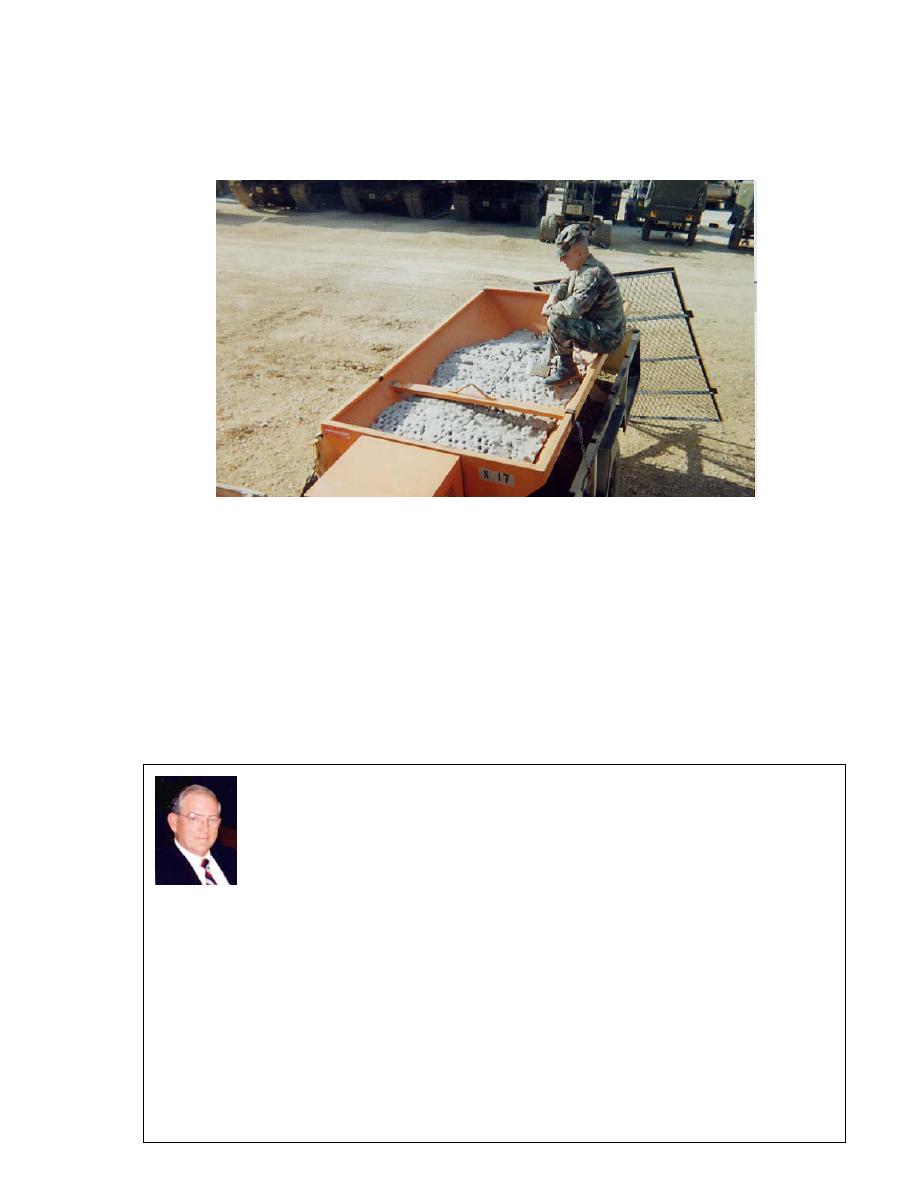
In February 2001, this Henderson spreader was filled with salt that was not
used. By the time the loaded spreader was discovered in August, it had
been exposed to sun and rain, as well as temperatures that reached 90F.
The rock salt had turned to solid rock. Even the rugged soldier shown here
with an axe was not able to chip off pieces larger than a peanut. It took two
soldiers using steam and hot water nearly six days to melt and chip this
load of solid salt out of the spreader, and several more days to loosen the
movable parts and grease them for the coming winter. Never leave salt or
sand/salt mixture in a spreader overnight. After each day's use, empty,
wash, and relubricate the spreader.
About the Author
Nicholas H. Collins, LTC, USA, (Ret) graduated from Norwich University in 1955 with a BS degree and from George Washington
University in 1974 with an MS degree and is now a Physical Scientist at the U.S. Army Cold Regions Research and Engineering Laboratory
(CRREL) in Hanover, New Hampshire. Colonel Collins was commissioned and entered active duty in 1955 and retired in 1984 after 29 years
of service. His alternate specialty while on active duty was R&D Coordinator, and his first R & D assignment (19721976) was in the
Mobility Branch , Combat Support Division, U.S. Army Materiel Systems Analysis Agency (AMSAA), where he concentrated efforts on
wheeled vehicle mobility and later served as Division Chief for two years. His second R & D assignment took him to the U.S. Army Cold
Regions Research and Engineering Laboratory (19791982) where he served as Deputy Commander. He further concentrated on mobility
R&D, and was instrumental in the U.S. Army adoption of the Army Basic Criteria for Tires (ABCT), which remains in effect today. Upon
leaving CRREL in 1982 he became the Chief, Test and Evaluation, Directorate of Combat Developments, U.S. Army Transportation School,
and a year later became the Director of Combat Developments, U.S. Army Transportation School. In 1984 he worked on a contract for
Martin-Marietta at Michigan Tech doing snow studies. In 1985 he was an Operations Research/Systems Analyst for FMC Corporation in San
Jose, California, and worked on mobility upgrades for the M-113 and the Bradley Fighting Vehicle. In 1990, he was invited to return to
CRREL as a civilian and now works as a coordinator for Military Programs. For the past seven years he has been primarily involved in the
snow and ice control (SNIC) program. In this position he also fills the role of Acting PM for SNIC equipment for TACOM.



 Previous Page
Previous Page
